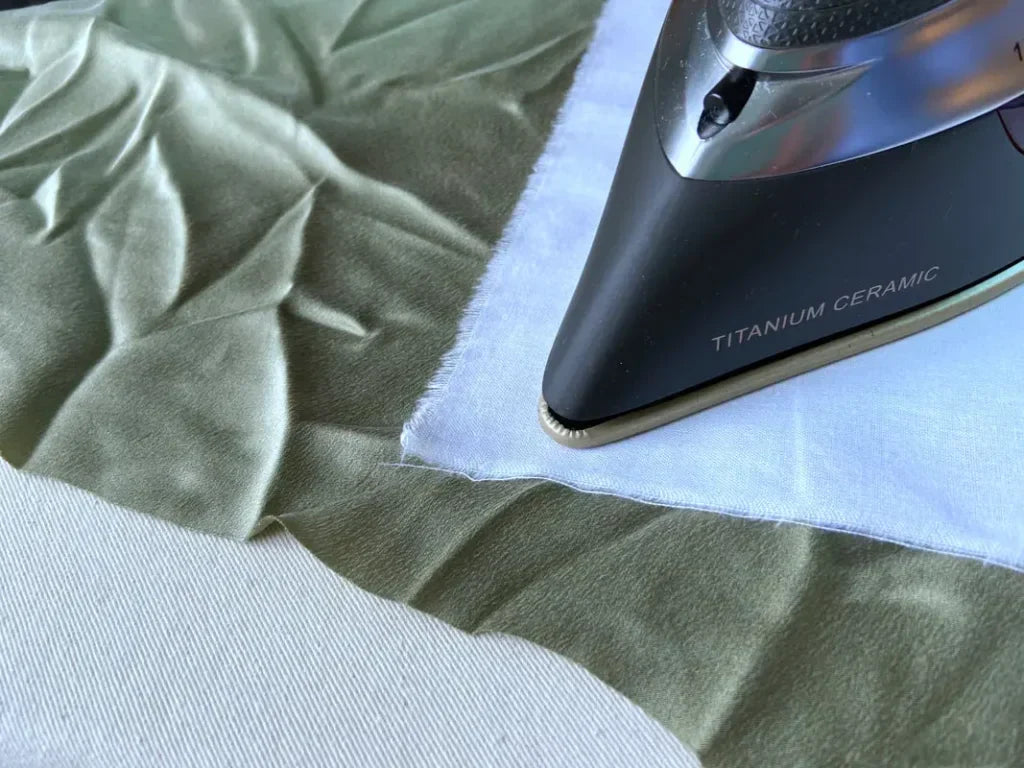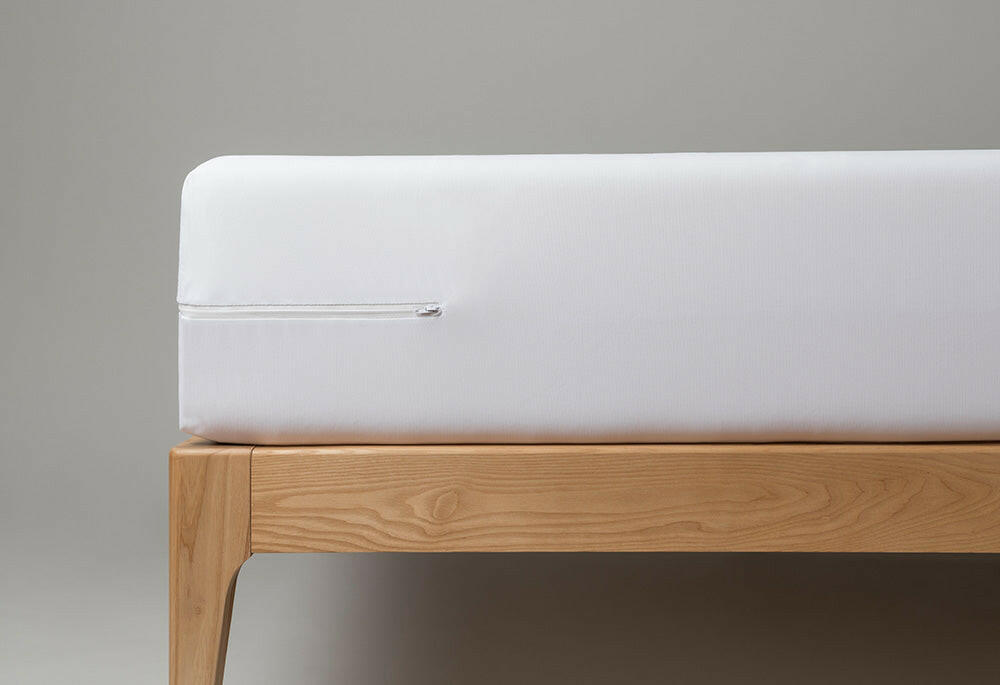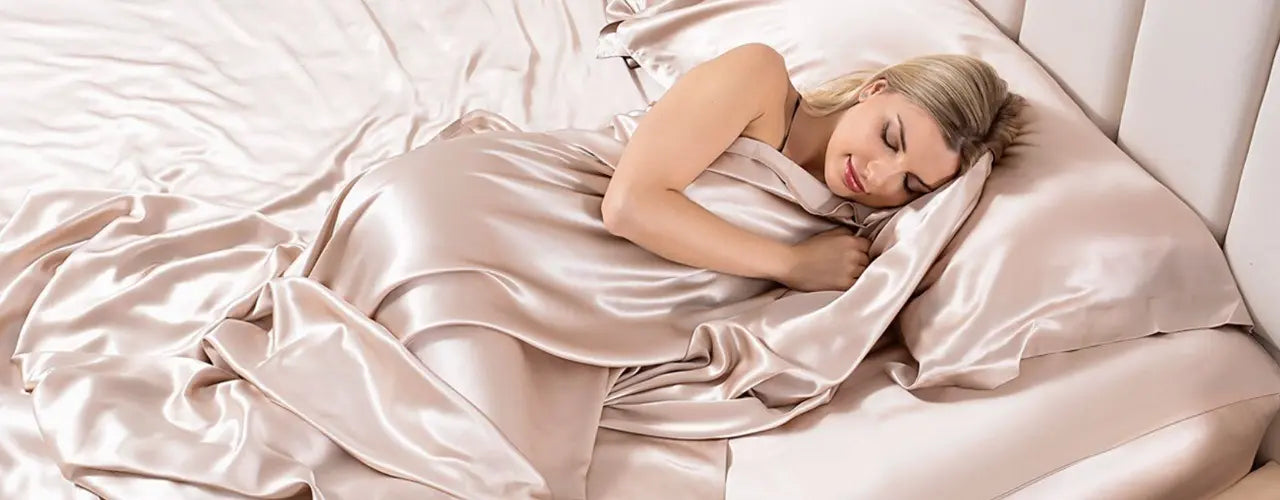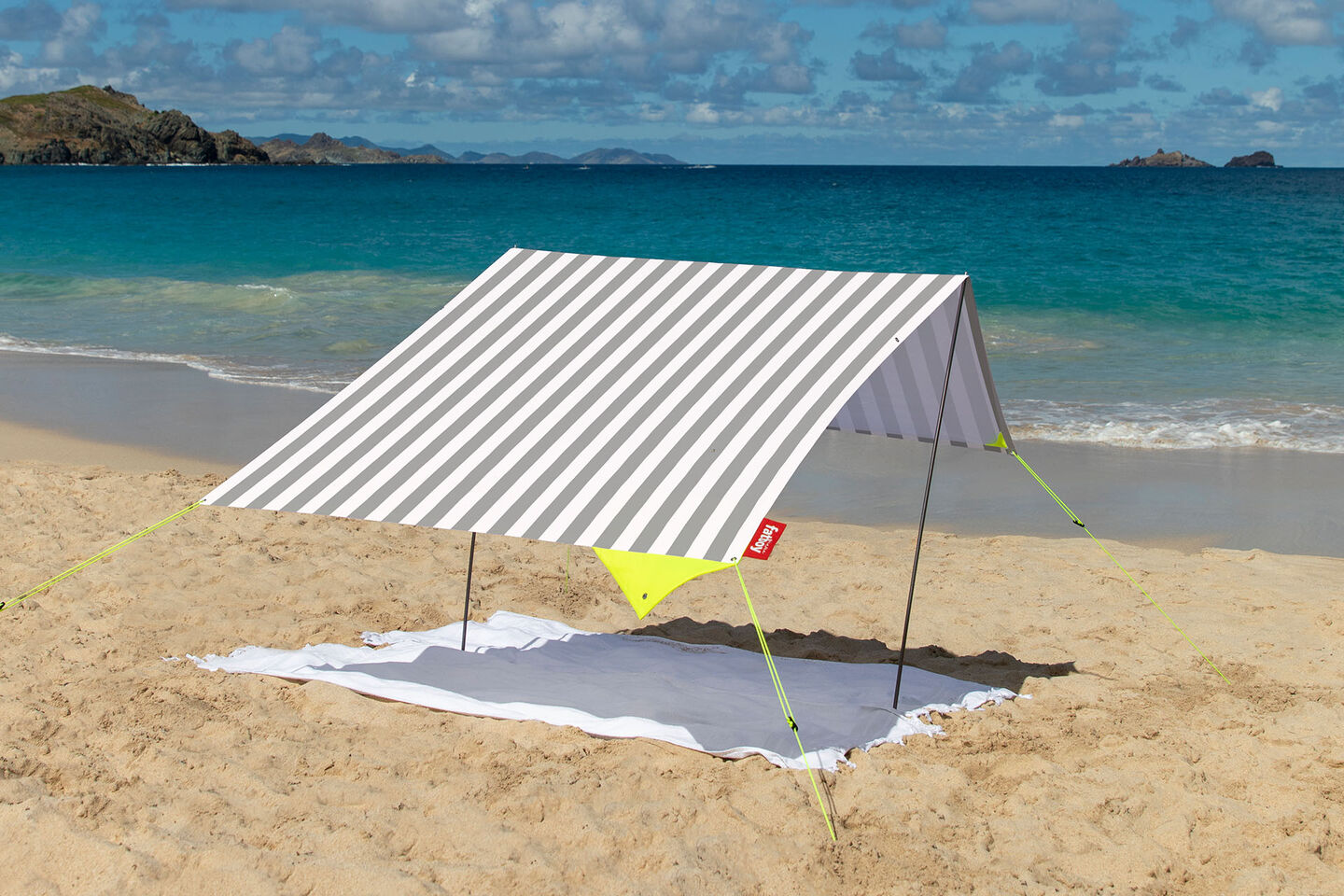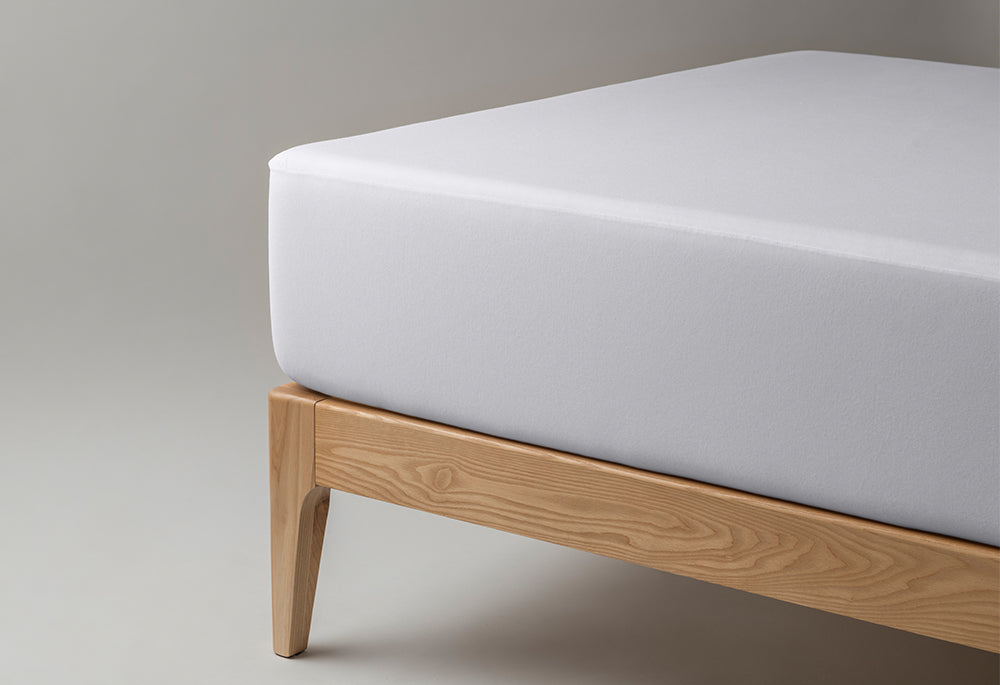How do I iron my silk?
Ironing silk can damage the fabric if you are not careful, but it doesn't have to be difficult. In fact, we recommend ironing silk regularly to maintain its shine. Silk is best ironed when it is slightly damp, with the iron on the lowest temperature. Below are the detailed steps you should follow when ironing your silk sheets and nightwear:
How to iron silk
In short
- Iron only when the silk is damp.
- DO NOT WRIST silk to remove excess water.
- Clean the iron beforehand.
- Use an undyed sheet between the ironing board and the silk.
- Iron the back (matte side) of your silk.
- Use a pressing cloth (handkerchief/glass towel, etc.).
- Set the iron to silk or low temperature.
- Move the iron around, and don't leave the iron in one place for too long.
A pressing cloth between the silk and the iron protects the silk from scorching.

Preparing silk before ironing
Silk is best ironed damp to minimize the effect of the iron's heat. We recommend ironing immediately after washing. – If you hand wash your silk, use a dry terry towel and squeeze very gently after rinsing to remove excess water from the fabric. Remember: DO NOT WRIST the silk, it can break the silk threads and cause stretching/tearing. – If you use a washing machine and the silk is spun on low speed, you can iron directly with an ironing cloth.
Clean iron
Other preparations before ironing – Make sure the surface of the iron is clean. If your iron is stained with rust stains, you can remove them using a baking soda solution. DO NOT IRON if the iron is dirty or has rust stains, as this can permanently damage the silk. – Set the iron to the silk setting, or the lowest temperature if there is no specific setting for silk. – Prepare a pure cotton pressing cloth, white or undyed, and place a pad on the ironing board, such as a clean sheet. This is to prevent the ironing board from transferring color to your silk and leaving stains or marks.

Place an undyed sheet under the silk you are going to iron.
Iron on the back of the silk and use a pressing cloth.
Silk fabrics use weaving techniques that give a shiny surface and a matte back. Always iron the back. You should iron silk section by section. Make sure the section you are ironing is smoothed out without wrinkles. You can also iron silk without a presser foot if the setting is on silk, i.e. low temperature. However, in general we recommend using a presser foot to cover the area you wish to iron to prevent potential damage. A small piece of thin cotton cloth, or a glass towel without color, would be ideal as a presser foot in this case.
Press the iron against the surface of the silk (or the pressing cloth) to begin ironing. Keep the iron moving to avoid local overheating that causes deformation of the silk fiber. – When you have finished ironing one section of the silk, smooth out another section and move the pressing cloth over to begin ironing until you are finished.
We recommend that you iron your silk after every wash or every other wash. Regular ironing helps preserve the natural shine of silk and can significantly extend the life of your silk.
Frequently Asked Questions / FAQ
Can I iron silk?
Yes, silk can be ironed, but it must be done carefully to avoid damaging the fabric. Use low heat (silk setting on your iron).
Should I iron silk inside out?
It is recommended to iron silk on the wrong side to protect the shine of the fabric. If you iron on the front side, you can place a thin cotton towel between the iron and the silk.
Can I use steam on silk?
Yes, but use light steam or a handheld steam iron. Too much steam can cause water spots, so test carefully on a small area first.
What happens if I use too much heat?
Too much heat can scorch or burn the silk, which can lead to permanent damage such as yellowing or melted fibers.
What do I do if I accidentally burn the silk?
If the fabric is scorched, it is unfortunately difficult to repair. For smaller marks, you can try gently cleaning the area with a damp cloth, but be aware that the damage may be permanent.
Should the silk be dry or damp when I iron?
Silk should be slightly damp when you iron for best results. If the fabric is dry, you can dampen a pressing cloth and place it over the silk when you iron.
Can I use an ironing cloth/pressing cloth?
Yes, an ironing cloth / pressing cloth (thin fabric placed over the silk, preferably in cotton) provides extra protection from direct heat from the iron.
How do I avoid water stains on silk?
Use distilled water in your iron to avoid mineral stains, and make sure the steam is not too strong.
How do I remove creases from silk without an iron?
Hang the silk in a steamy room, like a bathroom after a shower, or use a handheld steam iron. This is often more gentle than ironing.
Is it okay to use the iron directly on the silk?
It is recommended to avoid direct contact, but if you must, make sure the iron is on the lowest temperature (silk setting).
Can I use a regular steam iron for silk?
Yes, but use a low temperature and test on an inconspicuous area first to ensure the fabric can withstand the steam.
How do I iron silk garments with details such as embroidery?
Avoid ironing directly over embroidered areas. Iron around the details or use steam instead.
How do I store silk after ironing?
Silk bedding can be folded lengthwise and hung over a padded hanger, or carefully folded and laid as flat as possible in a dry, dark place to avoid new creases.
How long does it take to iron silk?
Silk often requires less time than other fabrics, as low heat and careful handling make the process efficient.
Can I use a fabric steamer instead of an iron?
Absolutely! A fabric steamer is a great alternative to an iron, as it is gentle and effective at removing creases without the risk of heat spots. Note that a steamer with steam only smooths out creases and folds. An iron, on the other hand, presses the fibers flat and smooth, giving the silk more shine.


